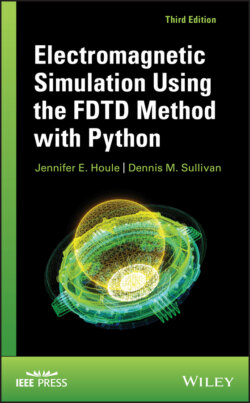Читать книгу Electromagnetic Simulation Using the FDTD Method with Python - Dennis M. Sullivan - Страница 8
Оглавление
PREFACE
The purpose of the third edition of this book remains the same as that of the first two editions: to enable the reader to learn the use of the finite‐difference time‐domain (FDTD) method in a manageable amount of time. For this reason, the first four chapters are fundamentally the same as previous editions. The major difference is the code has now been written in Python and each program contains the code for graphical outputs. The goal of these four chapters is to take the reader through one‐, two‐, and three‐dimensional FDTD simulation and, at the same time, present the techniques for dealing with more complicated media. In addition, some basic applications of signal processing theory are explained to enhance the effectiveness of FDTD simulation.
Chapter 5 addresses some of the advantages of Python and presents some programming topics the reader may not be familiar with. Some general programming strategies and best practices are discussed, and these practices are applied to an FDTD program. Finally, an introduction to interactive widgets is presented. This is a very useful feature that can help make programs that are user‐friendly to those without programming knowledge. This chapter is geared toward those who know a limited amount about Python.
Chapter 6 contains an example of a more complicated engineering project: simulating hyperthermia treatment. This is based on research done by the authors to simulate an annular phased array to plan hyperthermia cancer treatment. This chapter is meant to illustrate the power and practical application of FDTD simulations to model how a solution is obtained. The principles applied are all explained in Chapters 1–4.
Jennifer E. Houle and Dennis M. Sullivan
